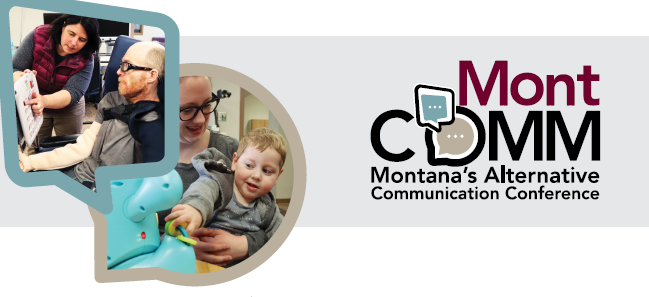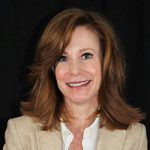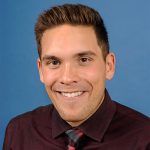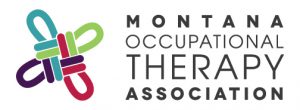
- This event has passed.
MontCOMM 2021 Featuring Mo Buti and Brandon Eddy!

Communication Across the Lifespan: Creative Strategies for Your Client, Student, or Family Member
MontCOMM 2021 is a one-day online immersion into the world of augmentative and alternative communication (AAC). Whether you’re a seasoned speech-language pathologist, a professional providing direct support to an adult with a developmental disability, an educator, or the parent of a young child who is not developing verbal communication, you will leave MontCOMM 2021 with new ideas for implementing AAC, supporting progress, and obtaining buy-in from other team members.
MontCOMM features two dynamic speakers with expertise that will benefit your work or your family, no matter where you are in the communication continuum. Mo Buti will cover behavior and communication, aided language stimulation, positive reinforcement using nonverbal approaches, a look at the Total Communication approach, and an introduction to low-tech and high-tech communication systems.
Brandon Eddy will present a more clinical track focused on data-driven AAC assessment, teamwork and tools to facilitate high-quality tele-AAC assessment and intervention in rural areas, intervention approaches for beginning communicators with focus on alternative access, and AAC considerations for clinical populations.
Great topics, and guess what? You don’t have to choose between our speakers! Your registration fee ($50 for the day; $100 for the day if you need CEUs from OPI, MOTA*, or ASHA**) entitles you to access both speakers. Jump between them as your interests dictate, and access the recorded sessions later.
August 12th, 8:30-5:00, Online.
Register here: https://www.eventbrite.com/e/montcomm-2021-tickets-140400584929
To register with a check, please contact Molly Kimmel at molly.kimmel@mso.umt.edu
MonTECH thanks the Office of Public Instruction and the Region III Comprehensive System of Personnel Development for providing scholarships to MontCOMM 2021.
Featured Speakers:
 Mo Buti (M.Ed-BD, M.Ed-Admin, QIDP) has over 31 years of experience serving adults with developmental disabilities and overseeing programs and services for public school students with autism and intellectual disabilities. She has devoted her career to advising and providing advocacy support to families and students with intellectual and developmental challenges. She is an international speaker with broadly recognized expertise in behavioral strategies, adult services, educational supports, and autism.
Mo Buti (M.Ed-BD, M.Ed-Admin, QIDP) has over 31 years of experience serving adults with developmental disabilities and overseeing programs and services for public school students with autism and intellectual disabilities. She has devoted her career to advising and providing advocacy support to families and students with intellectual and developmental challenges. She is an international speaker with broadly recognized expertise in behavioral strategies, adult services, educational supports, and autism.
(Ms. Buti received a speaking fee for MontCOMM 2021. She has no relevant non-financial disclosures.)
 Brandon Eddy (M.A., CCC-SLP) is a speech-language pathologist and research associate at Oregon Health and Sciences University (OHSU). He is an AAC specialist providing clinical services to children with complex communication needs, with special interest in assistive technology. Brandon speaks at national and international levels on topics related to AAC, and teaches graduate coursework in AAC, cleft and craniofacial disorders, and speech sound disorders.
Brandon Eddy (M.A., CCC-SLP) is a speech-language pathologist and research associate at Oregon Health and Sciences University (OHSU). He is an AAC specialist providing clinical services to children with complex communication needs, with special interest in assistive technology. Brandon speaks at national and international levels on topics related to AAC, and teaches graduate coursework in AAC, cleft and craniofacial disorders, and speech sound disorders.
(Mr. Eddy received a speaking fee for MontCOMM 2021. He has no relevant non-financial disclosures.)
Session Descriptions and Learning Objectives:
Zoom Room #1, Mo Buti:
Session 1: What Is Behavior Communicating, and Why?
Description:
Research shows around 70% of all communication is nonverbal. This means body language, facial expressions, and gestures are all communicating for us, even when we are not saying anything. Adults and children communicate through their behavior every moment, every day, even if they are not aware of it. Challenging behavior often manifests out of frustration at either not understanding a situation or being unable to verbally express wants, needs and feelings. As children get older and consequently develop appropriate vocabulary, sentence structure and social skills, these high-level behaviors tend to reduce. For those who have communication disorders, these behaviors might continue when there is not a functional way to communicate.
Learning Objectives:
o Participants will learn how to interpret behavior as communication.
o Participants will learn how a functional communication system can influence behavior.
Session 2: Total Communication
Description:
The Total Communication (TC) approach is about using the right combination of communication methods for an individual to ensure the most successful forms of contact, information exchange and interaction. It is a way of optimizing an individual’s potential and reducing the extent of their communication difficulties. During this session, we’ll explore this philosophy of communication.
Learning Objectives:
o Participants will be able to describe the Total Communication approach.
o Participants will be able to identify multiple communication methods to consider when utilizing the Total Communication approach.
Session 3: Aided Language Stimulation
Description:
Aided Language Stimulation is the process of modeling Augmentative and Alternative Communication (AAC) in everyday settings. The communication partner talks to the person while also pointing at or selecting keywords on the person’s AAC system. We will learn the process of Aided Language Stimulation and some practical strategies on what this looks like in the real world.
Learning Objectives:
o Participants will be able to describe the role of communication partners.
o Participants will learn how to model different forms of communication.
Session 4: Introduction to Low-tech and High-tech Communication Systems
Description:
There are so many different options out there. Where do we even start? We will explore many options and learn some benefits and challenges of each one.
Learning Objectives:
o Participants will be able to name both low-tech and high-tech communication options.
o Participants will be able to identify benefits of multiple communication systems.
Zoom Room #2, Brandon Eddy:
Session 1: Feature Matching and AAC Assessment: A Data-driven Approach
Description:
Feature matching is the evaluation process used to match a client to communication tools and strategies. Due to the unique sensory, physical, cognitive, and linguistic profiles of each AAC user, a single standardized assessment approach is not possible. The purpose of this presentation is to support clinicians to develop criterion referenced assessment strategies to evaluate use of AAC features. The presenter will demonstrate feature matching strategies that may be conducted in-person or via tele-practice.
Learning Objectives:
o Participants will explain two benefits of AAC feature matching.
o Participants will describe methods to assess two features during the AAC evaluation.
o Participants will identify at least one AAC feature that may change with experience or intervention.
Session 2: One Boat, One Team, One Mission: Teamwork and Tele-AAC in Rural Communities
Description:
Maximizing outcomes for clients who use AAC is dependent on effective teaming across the lifespan, particularly for clients living in rural communities who may lack access to trained AAC clinicians. The presenter will review AAC teamwork literature, share strategies to facilitate readiness to change, and review coaching strategies for training team members. The presenter will also discuss tools, strategies, and resources that may facilitate high-quality tele-AAC assessment and intervention sessions.
Learning Objectives:
o Participants will identify two barriers to interdisciplinary teaming.
o Participants will describe two strategies to promote interdisciplinary collaboration in AAC practice.
o Participants will identify two hardware/equipment considerations for facilitating AAC services.
o Participants will describe the use of emulation software and remote access in facilitating tele-AAC intervention.
Session 3: AAC Interventions for Beginning Communicators
Description:
This presentation will prepare clinicians to provide evidence-based interventions for beginning communicators. The presenter will discuss intervention approaches with a focus on alternative access (e.g., eye-gaze, scanning) that can be used to increase a client’s participation and expressive language while developing operational competence. The presenter will also review published intervention studies supporting syntax development with AAC users while extracting key steps to each intervention. The presenter will demonstrate intervention delivery over a tele-practice environment.
Learning Objectives:
o Participants will compare and contrast emergent, context-dependent, and beginning communicators.
o Participants will summarize two intervention techniques appropriate to emergent/beginning communicators using AAC.
o Participants will summarize two intervention techniques for beginning communicators to develop their linguistic competence.
Session 4: AAC Considerations for Clinical Populations
Description:
Clinical populations such as individuals with cortical visual impairment, history of stroke, or amyotrophic lateral sclerosis may benefit from additional considerations during the assessment and treatment process as it relates to AAC use. The presenter will review AAC assessment and intervention considerations when working with clients with these conditions. The presenter will review rate enhancement strategies, alternative access techniques, visual accommodations, and intervention approaches which may benefit these various clinical populations.
Learning Objectives:
o Participants will identify at least one intervention approach to improve participation of an individual with amyotrophic lateral sclerosis.
o Participants will identify at least one intervention approach to improve participation of an individual with a history of stroke.
o Participants will identify at least one intervention approach to improve participation of an individual with cortical visual impairment.
Agenda:
8:30-8:45 Welcome from MonTECH
8:45-10:15 Session 1
10:15-10:30 Break
10:30-12:00 Session 2
12:00-12:30 Lunch
12:30-1:30 MonTECH Demos in Zoom Room #1
12:30-1:30 AAC Town Hall in Zoom Room #2
1:30-1:45 Break
1:45-3:15 Session 3
3:15-3:30 Break
3:30-5:00 Session 4
*MontCOMM 2021 is offered for .6 MOTA CEUs.

**MontCOMM 2021 is offered for .6 ASHA CEUs (Various Levels).

